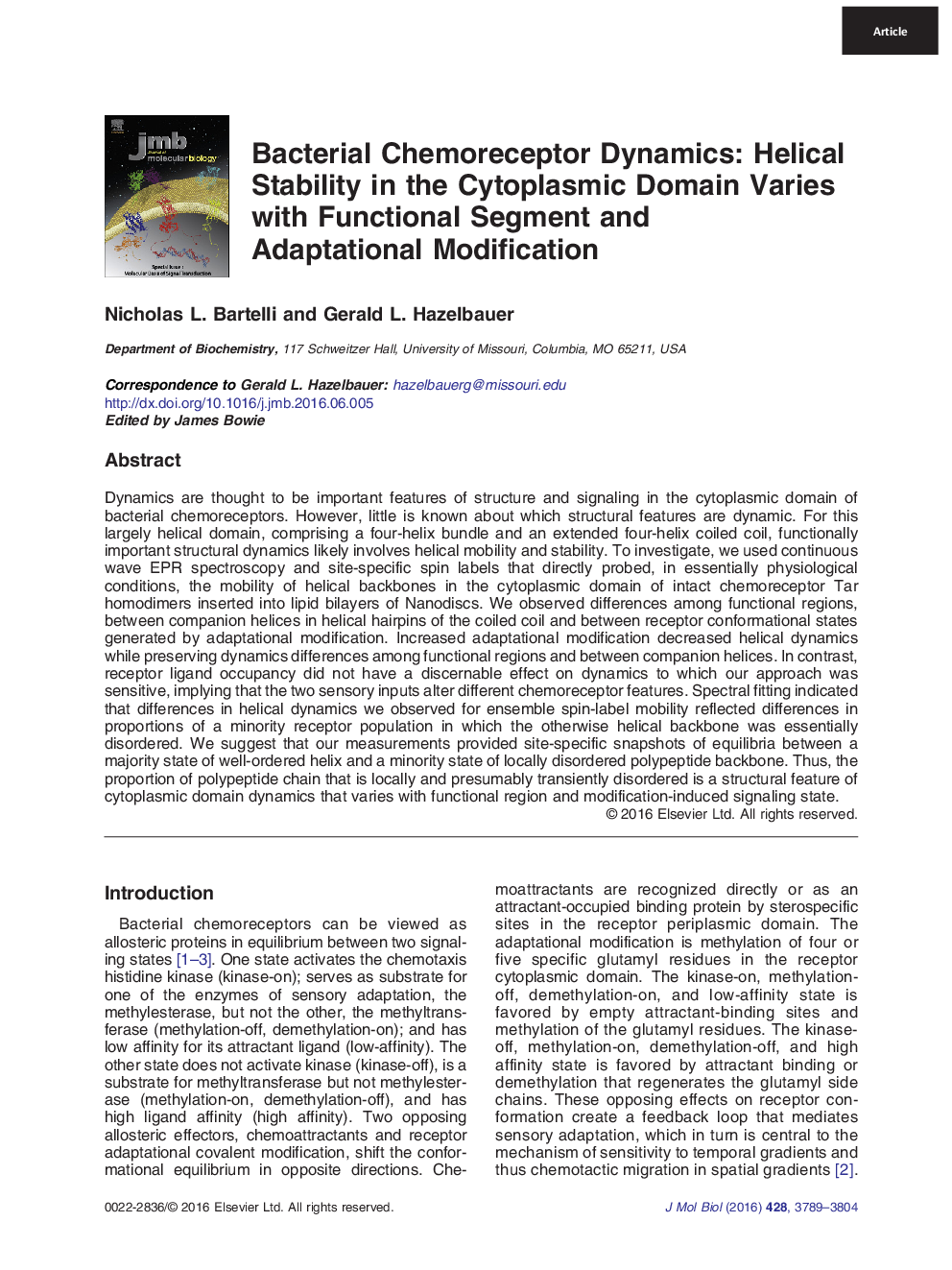| کد مقاله | کد نشریه | سال انتشار | مقاله انگلیسی | نسخه تمام متن |
|---|---|---|---|---|
| 5532909 | 1402086 | 2016 | 16 صفحه PDF | دانلود رایگان |

- Helical dynamics in cytoplasmic domain of intact, bilayer-inserted chemoreceptors
- Receptor helical dynamics varies with functional segment and structural element
- Variable chemoreceptor dynamics correlates with the proportion of helical disorder.
- Adaptational modification alters chemoreceptor helical dynamics/percentage disordered.
- Ligand binding and adaptational modification alter different structural features.
Dynamics are thought to be important features of structure and signaling in the cytoplasmic domain of bacterial chemoreceptors. However, little is known about which structural features are dynamic. For this largely helical domain, comprising a four-helix bundle and an extended four-helix coiled coil, functionally important structural dynamics likely involves helical mobility and stability. To investigate, we used continuous wave EPR spectroscopy and site-specific spin labels that directly probed, in essentially physiological conditions, the mobility of helical backbones in the cytoplasmic domain of intact chemoreceptor Tar homodimers inserted into lipid bilayers of Nanodiscs. We observed differences among functional regions, between companion helices in helical hairpins of the coiled coil and between receptor conformational states generated by adaptational modification. Increased adaptational modification decreased helical dynamics while preserving dynamics differences among functional regions and between companion helices. In contrast, receptor ligand occupancy did not have a discernable effect on dynamics to which our approach was sensitive, implying that the two sensory inputs alter different chemoreceptor features. Spectral fitting indicated that differences in helical dynamics we observed for ensemble spin-label mobility reflected differences in proportions of a minority receptor population in which the otherwise helical backbone was essentially disordered. We suggest that our measurements provided site-specific snapshots of equilibria between a majority state of well-ordered helix and a minority state of locally disordered polypeptide backbone. Thus, the proportion of polypeptide chain that is locally and presumably transiently disordered is a structural feature of cytoplasmic domain dynamics that varies with functional region and modification-induced signaling state.
Graphical Abstract97
Journal: Journal of Molecular Biology - Volume 428, Issue 19, 25 September 2016, Pages 3789-3804